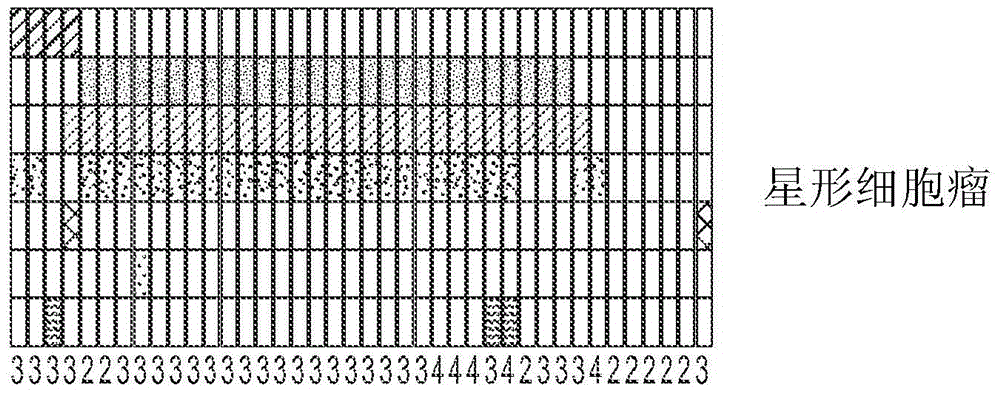Tert promoter mutations in gliomas and subset of tumors
A glioma and promoter technology, applied in the fields of botanical equipment and methods, biochemical equipment and methods, microbial measurement/testing, etc., can solve the problem of lack of homologous recombination
- Summary
- Abstract
- Description
- Claims
- Application Information
AI Technical Summary
Problems solved by technology
Method used
Image
Examples
Embodiment 2
[0035] Relying on the availability of samples in the laboratory, the inventors attempted to evaluate at least 20 individual samples of common tumor types and a small number of samples of rare tumor types. Among those tumor types in which the inventors' experimental studies showed a large number of mutations, additional tumors were evaluated. Melanoma and tumors of the lung, stomach, and esophagus were excluded because they had been adequately evaluated in the cited seminal papers (14, 15). When using primary tumors without utilizing cell lines, the inventors ensured that the proportion of tumor cells was greater than 50% by histopathological examination of frozen sections of tissue blocks used for DNA purification. In those cases where the tumor content was less than 50%, the inventors microdissected the lesion to enrich the tumor content to greater than 50%. Primers were designed to amplify a region containing two TERT mutations, C228T and C250T, corresponding to positions 1...
Embodiment 3
[0046] sarcoma
[0047] One of the most frequent TERT promoter mutations was found in myxoid liposarcoma (19 of 24 tumors, 79% of tumors had mutations). Myxoid liposarcoma accounts for more than one third of all liposarcomas and -10% of all adult soft tissue sarcomas (16). Patients are relatively young, and their peak age range is between 30 and 50 years old. At the gene level, the most characteristic change is the t(12;16)(q13;p11) chromosomal translocation, which results in the fusion of the FUS and DDIT3 genes (16, 17). The cellular origin of these tumors is unknown, but preadipocyte progenitors and mesenchymal stem cells have been implicated (18); after embryogenesis, the division activity of these cells is thought to be low. Other sarcomas are also thought to arise from mesenchymal cells that do not self-renew in the absence of injury, and are not TERT-H (Table 1). These sarcomas included synovial sarcomas (0% of 16 tumors) and osteosarcomas (4.3% of 23 tumors). Of no...
Embodiment 4
[0068] Embodiment 4--ALT to TERT
[0069] ALT has been observed more frequently in tumors of the central nervous system, especially glial tumors, than in tumors of any other tissue type. Considering that TERT promoter mutations are also commonly found in glial tumors, the relationship between these two features could be determined with high confidence. The tumors depicted in Figure 2 have previously been assessed for ATRX alterations, which are almost perfect surrogates for the ALT phenotype (11, 37). The inventors' data showed that 50 glial tumors had ATRX mutations and 83 glial tumors had TERT mutations; 0 of 83 tumors with TERT mutations had ATRX mutations (P<0.0001, Fisher's exact probability test , two-tailed).
PUM
 Login to View More
Login to View More Abstract
Description
Claims
Application Information
 Login to View More
Login to View More - R&D
- Intellectual Property
- Life Sciences
- Materials
- Tech Scout
- Unparalleled Data Quality
- Higher Quality Content
- 60% Fewer Hallucinations
Browse by: Latest US Patents, China's latest patents, Technical Efficacy Thesaurus, Application Domain, Technology Topic, Popular Technical Reports.
© 2025 PatSnap. All rights reserved.Legal|Privacy policy|Modern Slavery Act Transparency Statement|Sitemap|About US| Contact US: help@patsnap.com



